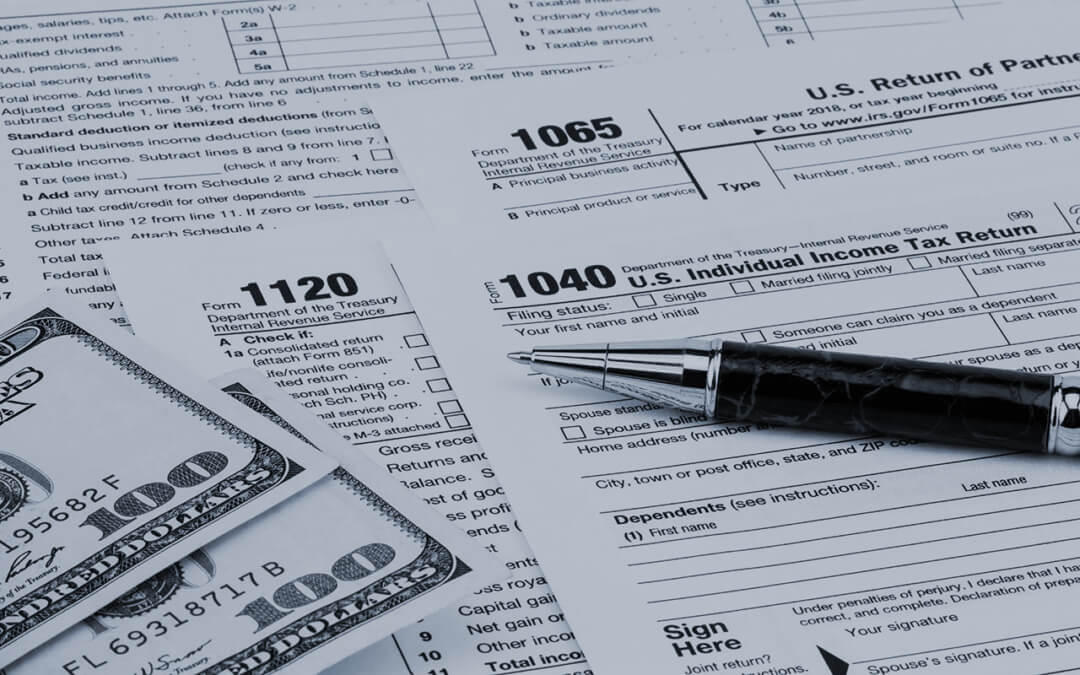Targeting business tax incentives to realize U.S. wage growth

This essay is part of Boosting Wages for U.S. Workers in the New Economy, a compilation of 10 essays from leading economic thinkers who explore alternative policies for boosting wages and living standards, rooted in different structures that contribute to stagnant and unequal wages. The authors in the new book demonstrate that efforts to improve workers’ access to good jobs do not need to be limited to traditional labor policy. Policies relating to macroeconomics, to social services, and to market concentration also have direct relevance to wage levels and inequality, and can be useful tools for addressing them.
To read more about Boosting Wages for U.S. Workers in the New Economy 20 and download the full collection of essays, click here.
Overview
Policymakers in the United States place significant faith in the belief that business tax incentives can boost wage growth for workers. Underlying this belief is a complicated set of chain reactions that connect tax policy to worker wages. In theory, tax cuts stimulate investment, lead to an investment-driven increase in employment, and, under the right labor market conditions, deliver wage gains to workers.
The latest academic research uses state-of-the-art methods and new U.S. administrative data to improve our understanding of the many links that connect tax policy to wage growth. Across a variety of policies, the empirical evidence does not support the belief that broad-based tax cuts consistently deliver wage gains to workers.
Instead, researchers find mixed results across different settings. For instance, some tax cuts failed to ignite an investment or employment response. Other tax incentives did stimulate investment and employment, but not wage growth. In some other cases, researchers find that tax cuts delivered regional or firm-level wage gains to workers. Yet even in the cases where tax cuts led to wage gains, the overall impact of these policies was an increase in income inequality.
Based on this evidence, policymakers who are focused on stimulating wage growth through tax policy should consider alternatives to broad-based tax cuts. This essay proposes one such alternative: tax cuts that are directly tied to the realized average wage growth of a firm’s workforce.
An obvious benefit of this proposal is that, by design, it ensures workers benefit from business tax incentives. But recent experiences from local economic development programs and from targeted tax incentives also demonstrate that policies designed with weak accountability mechanisms may not deliver the promised gains to workers. Developing compliance and monitoring systems is therefore key to ensuring that workers benefit from targeted tax cuts.
In this essay, I first discuss the potential for basing targeted tax cuts on realized wage growth. I then discuss recent studies from the academic literature on the effectiveness of different tax policies for stimulating investment, employment, and wage growth. I find that the empirical evidence does not support the belief that broad-based tax cuts consistently deliver on the promise of wage growth. Based on this evidence, I propose that linking business tax cuts to realized wage growth is a better approach, and that requiring strong compliance mechanisms, in which firms deploy their tax incentives toward forms of production that develop worker skills, is key to boosting wage growth.
The role for targeted tax cuts
As I discuss in the next section, recently enacted tax policies have not been able to effectively deliver economic gains for workers. This is why it’s worth considering whether targeted tax cuts can be directly designed to ensure wage growth. To see why targeted tax cuts may be desirable, it is useful to think about the effects of broad-based tax cuts on three different types of firms:
- The first firm is one with established production processes. Investment or employment at this firm will not be stimulated by a lower tax rate.
- The second firm is one that would invest in new modes of production if it faced a lower tax rate. Facing a lower tax rate, however, this firm would opt to replace existing workers through automation.
- The third firm is one that also would invest in new modes of production, but instead of replacing workers with machines, it would invest in technologies that would enhance worker productivity.
A broad-based tax cut would be a boon for the owners of the first firm, but the tax cut would fail to stimulate new economic activity. While the tax cut would spur investment in the second firm, the policy could unnecessarily reward automation, incentivize the replacement of workers with machines, and potentially lower the wages of the remaining employees.1 As long as wages reflect the rise in productivity, the workers in the third firm have the best chance of benefiting from a broad-based tax cut.
While policymakers may want to help workers in the third firm, this example shows that a broad-based tax cut is an imperfect way to boost the wages of most workers. Indeed, the policy may lead to an overall increase in inequality, especially if the lower taxes paid by all firm owners and the losses to workers in the second firm exceed the wage gains of the workers in the third firm.
Consider, then, the effects of a tax cut that is indexed to wage growth. Specifically, suppose firms get a reduction in their income tax rate—for instance, of 5 percentage points—only if the average wage growth across all of their employees exceeds some threshold—for instance, 4 percent. Investments by the first two firms would not be affected by this policy. In contrast, if investment by the third firm increased worker productivity by more than the wage increase, the firm would respond to the tax incentive by both increasing investment and raising wages. To promote continued wage growth, the policy could award tax cuts to firms based on the average wage growth of the past, say, 3 years. This feature would incentivize firms to design their medium-term investment plans with a view toward increasing the productivity of their workforce. The promise of targeted tax cuts is to stimulate these kinds of firms to invest in technologies or worker training that will lead to sustained wage growth.
In the example above, the targeted tax incentive took the form of a lower corporate tax rate. One drawback of this proposal is that only workers in firms with current profits may benefit from the policy. An alternative formulation would be to award firms with sufficient wage growth a refundable tax credit for new investment.2 The size of the tax credit could also be capped at some multiple of the wage increase to ensure that the majority of the gains accrue to workers.
An additional variation would be to set a target for wage growth for employees below a certain income cap.3 This would ensure that increases in average wage rates are not driven by increases in the compensation of top earners, so that low- and medium-wage workers benefit from the tax incentive. These features follow the insight of the “inequality insurance” policy proposed by Yale University economist Robert Shiller—a proposal that links tax policies to realized levels of inequality.4
Tying tax credits to outcomes at firms is not new. Research and development tax credits, for example, have long defined the creditable tax base, relative to previous levels of R&D. Local development agencies also condition eligibility for investment incentives on meeting employment targets. More recently, fiscal support in response to the coronavirus pandemic also tied the generosity of government assistance to whether firms retained existing employees. All of these examples show that policymakers often tie fiscal incentives to outcomes, and highlight the importance of strong compliance mechanisms.
A potential problem with tying tax cuts to realized wage gains is that firms may find ways to maximize the tax benefit while minimizing the gains to workers. A particularly undesirable effect could be that firms increase average wages by laying off lower-wage workers or replacing them by outsourcing their services to third-party firms. To avoid this potential problem, firms that participate in such a program would have to commit to employment plans and wage increases for existing employees. Firms that participate in the program would have to be monitored by an agency, such as the IRS, that is able to compute average wage increases for a firms’ workforce, which could be accomplished by relying on data from W-2 forms.
I and my co-authors Zhao Chen and Zhikuo Liu of Fudan University and Daniel Yi Xu of Duke University examine these types of tax incentives in a program designed to increase R&D investment in China.5 The program provides tax cuts to firms that certify as part of a special program and that comply with innovation plans that include, among other things, the employment of scientists and researchers. Even in a setting where compliance is far from perfect, we show that such programs can be effective at stimulating R&D activities that may benefit other firms through knowledge spillovers.
One potential risk of awarding tax breaks to specific firms is that the government may not be able to identify valuable opportunities or that government officials may offer tax cuts to politically connected firms. These concerns are justified by the track records of local economic development incentives,6 and by failures in the design of the Opportunity Zones program7 and the Paycheck Protection Program.8
These problems could be mitigated by relying on a competitive selection process. Sabrina Howell of New York University’s Stern School of Business, in a recent study, highlights an example of an effective use of competitive project selection.9 She shows that R&D grants awarded by the U.S. Department of Energy successfully identified projects at start-up firms that were more likely to receive later-stage venture capital funding and result in successful innovations. There are several other successful examples of such policies that subsidize businesses in particular geographic areas and result in increased investment, employment, and wage gains.10
Competitive selection processes can prioritize projects that directly address market failures, that prioritize investment in worker training, or that may provide relief to areas where wage stagnation has led to particularly dire social outcomes. The process of firm selection also could be used to target preexisting economic disparities—such as underemployment of Black or Hispanic workers, or racial wage differentials—and to ensure that participation in the program is not limited to few privileged firms.
By designing tax cuts to directly influence wage growth, the proposed targeted tax cuts would be a significant departure from the usual dynamic of cutting business taxes first and measuring the incidence later. Moreover, targeted tax cuts follow on a long tradition in public finance that shows targeting can lower the cost of fiscal incentives while focusing on specific benefits.
At the same time, any incentive system is only as effective as its implementation in the real world. While some of the features above build on the failures of previous policies, lessons from the local economic development literature can aid in designing effective policies.11 It is also possible that policymakers may shy away from the provisions above, which may limit their own influence or be unpopular with key constituencies, especially business groups.
Designing effective policies that are politically feasible is therefore a key area for further policy innovation. While effective design and political feasibility are key concerns, the suggestion to tie wage growth to tax cuts is a first step in reconsidering how business tax policies can boost wage growth.
The effects of U.S. business tax policies on wage growth
U.S. business tax cuts can potentially have several impacts on the U.S. labor market. Assuming a given tax incentive stimulates business investment, firms may pair capital investments with workforce expansions. Wages can potentially increase through a couple of mechanisms. If the labor market is well-approximated by a competitive equilibrium, then additional labor demand can boost wages. Alternatively, when wages are set through collective bargaining, productivity gains from capital investment may benefit workers as bargaining agreements are revised. However, while it is possible for business tax cuts to spur wage growth, it is not a fait accomplithat tax incentives will stimulate investment, let alone wage growth. Indeed, it is even possible that tax incentives may stimulate transitions to more automated forms of production that replace workers with machines.
Recent advances in academic research shed light on the many possible links between tax incentives, investment, employment, and wage growth. Disentangling these effects empirically is difficult for two reasons. First, researchers must separate spurious correlations from causal effects of tax policies. In practice, this requires making careful comparisons between firms that face different tax incentives, and where it is plausible to assume that this is the only difference between these firms that could affect investment, employment, or workers’ wages. Second, measuring the impact of tax policies at both the firm and worker levels is complicated by a lack of widespread access to the necessary data.
In recent years, researchers have made progress on both fronts by either using modern research methods developed in other areas of economics and/or using administrative tax data to measure outcomes among firms and workers. Let’s now turn to four ways in which tax incentives designed to boost wage growth may or may not produce the desired results.
A tax cut that did not stimulate investment or employment
Consider, as a starting point, the case of the 2003 dividend tax cut. This federal tax cut lowered the top tax rate on dividend income from 38.6 percent to 15 percent, and was meant to boost investment and employment growth. Danny Yagan, an economist at the University of California, Berkeley, studies the impact of the 2003 dividend tax cut.12 He uses administrative tax data to compare S-corporations (firms organized to pay income taxes through their owners) and C-corporations (those firms that pay corporate income taxes directly) that are otherwise similar but that differ in their exposure to the 2003 dividend tax cut. Yagan finds that this large tax cut had no effect either on investments or payroll.13 These results are a cautionary tale, showing that tax incentives can fail at stimulating investment and employment, let alone wage growth.
A tax incentive that stimulated investment and employment, but not wage growth
A second set of papers studies policies that stimulate investment by reducing the cost of investment. One such policy—bonus depreciation—reduces the cost of investment by allowing firms to claim depreciation deductions earlier, which increases the present value of this deduction. For example, consider the case of a business that buys a truck for $100,000. Under standard depreciation rules and practices, the business deducts $100,000 from its taxable income over a period of 6 years. Bonus depreciation allows firms to deduct a fraction, say 50 percent, of the $100,000 in the year the truck is purchased, with the remaining fraction spread over the full 6 years. By speeding up the depreciation schedule, the policy lowers the total cost of investment.
Eric Zwick of the University of Chicago Booth School of Business and James Mahon at the accounting firm Deloitte LLP use industry-level differences in the lifespan of capital investments to identify firms that benefit more from bonus depreciation.14 Using administrative tax data, they show that the policy stimulated investment in firms that had more to gain from the policy, relative to those that benefited less. Zwick and Mahon document considerable heterogeneity in the effects of the policy, with smaller firms and those facing financial frictions having the largest responses to the tax policy.15 In a related study, economist Eric Ohrn of Grinnell College studies a state-level version of bonus depreciation and also finds that these policies lead to increases in business investment.16
Understanding the effects of bonus depreciation on the labor market is central to recent policy changes in the Tax Cuts and Jobs Act of 2017, which allows firms to fully depreciate—or expense—capital investments. Studying firm-level payroll data, Zwick and Mahon find positive effects of bonus depreciation.17 I and my co-authors, Grinnell’s Ohrn and Daniel Garrett of the University of Pennsylvania’s Wharton School, further study the labor market effects of bonus depreciation by identifying the local labor markets that had more to gain from bonus depreciation.18 Specifically, we find that employment and payroll increased in places that were more heavily exposed to industries that could benefit from the policy. Studying the effects on average earnings, however, we find null or negative impacts of the policy.
This research highlights one of the empirical challenges of estimating the effects of tax policy on wage growth: separating worker-level effects on wage rates from changes in the composition of the workforce. Specifically, if the tax policy leads firms to hire lower-wage workers, then we might be tempted to conclude that the policy reduced wages, while it mostly expanded employment opportunities for lower-wage workers.
Studies of tax incentives that impacted firm-level wage growth
A third set of papers shows that some tax policies did impact firm-level wages. Consider, for instance, the role of business tax incentives in the noncorporate sector, which has been growing in importance over time. Max Risch of Carnegie Mellon University studies how the 2012 increase in personal income tax rates affected wages of workers in S-corporations.19 These firms differ from standard corporations in that firm profits are taxed at the personal income level and are not subject to the corporate income tax. Using administrative tax data linking firm owners and workers, Risch shows that workers’ wages were affected by whether firm owners were subject to the tax increase. Risch finds that workers’ wages only decreased by 15 cents to 18 cents of every dollar of additional tax liability for the firm owner. One benefit of using employer-employee linked data in this study is the ability to show that wage increases are driven by wage changes of individual workers and not by changes in the types of workers hired by the firm.
Along with the noncorporate sector, it is important to consider the effects of reforms that impact multinational firms. I study the impact of an international tax provision—the 1996 repeal of Section 936 as part of the Small Business and Job Protection Act—that limited profit shifting through Puerto Rico.20 I show firms that were previously able to shift profits to Puerto Rico responded to the rise in tax liabilities resulting from the repeal of Section 936 by reducing investment and employment in the United States. These firm-level effects also had regional implications. Regions of the United States that were more exposed to the establishment networks of these firms saw persistent declines in employment, income, and wage growth among their workers, who also were more likely to rely on income transfers from the government, such as Unemployment Insurance and supplemental nutrition assistance.
Grinnell College’s Ohrn examines the effects of a different tax incentive—the Domestic Production Activities Deduction created as part of the American Jobs Creation Act of 2004—on corporate investment.21 He finds that the resulting reduction in corporate tax rates has a similar impact on investment as bonus depreciation, per dollar of tax revenue. Then, there’s the study by three economists working for the U.S. Congress’ Joint Economic Committee and the Federal Reserve—Christine Dobridge, Paul Landefeld, and Jacob Mortenson—on how this policy impacts wages using administrative tax data.22 They find that lowering corporate tax rates led to increased average wages in firms that claimed this deduction. But they also document significant effects on the within-firm distribution of wages, finding that the majority of wage gains are concentrated among workers in the top 5 percentiles of the firm’s wage distribution, and that there was zero impact on the wages of the median worker at these firms. These findings are consistent with further research by Ohrn, showing that tax savings from this policy led to an increase in executive compensation.23
Studies of tax incentives that impacted regional wage growth
A final set of papers relies on regional variation in tax rates to identify the effects of business tax cuts on wage growth. I and my co-author Owen Zidar of Princeton University study the effects of cuts to state corporate tax rates.24 We find that the number of establishments in a location increases following a tax cut. This effect is followed by an increase in job growth and—over a 10-year period—an increase in hourly wage rates. These findings belie the notion that tax cuts are fully absorbed by capital owners.
The positive effects of business tax cuts on wage growth are echoed by studies in Europe. One study leverages regional variation in corporate taxes across German municipalities.25 Another study investigates the direct effect of tax changes in a sample of European companies.26 Both studies focus on within-firm wage changes and find that tax cuts also increase wages. In these studies, about half of the incidence of a tax cut is borne by workers.
While these results are consistent with those that Zidar and I find, the estimated wage gains arise from different underlying mechanisms.27 We find that wage increases are the result of competitive market forces at the regional level. In the two European studies, the authors find that wage increases are driven by within-firm changes in compensation, which depend on labor market institutions such as bargaining agreements.
This distinction matters for the timing of benefits to firm owners and workers. In the market mechanism, after-tax profits rise immediately, while wages rise over time as firms respond to the prospect of higher profits by expanding or starting new operations. Zidar and I find that the process of wage gains evolves gradually over a decade.28 But in the German study, the largest gains arise in firms subject to collective bargaining, in which wage gains materialize over 1 year to 3 years.29
A similarity across these studies in the United States and Europe is that, while workers gain through wage increases, business tax cuts may lead to an overall increase in income inequality. The German study estimates that corporate taxes in that country are overall progressive.30 The results that Zidar and I find imply that while workers gain through employment and wage increases, U.S. business tax cuts are overall regressive.31
These results are further confirmed by me and my co-authors, Suresh Nallareddy of Duke University’s Fuqua School of Business and Ethan Rouen at Harvard Business School. We use state corporate tax changes in the United States to directly estimate that state corporate tax cuts increase top-income inequality.32
Conclusion
Recent research considerably improves our understanding of how tax policy can impact investment and employment. It is possible that some policies may be justified by their effects on investment and employment, especially when new jobs benefit low-wage workers. At the same time, the findings do not paint an optimistic picture for the specific goal of using broad business tax cuts to spur wage growth. Some tax cuts fail to stimulate investment. Other tax incentives stimulate investment and employment, but have no impact on wage growth. And business tax cuts can sometimes stimulate investment, employment, and wage growth, but these gains are often concentrated at the top end of the income distribution and are accompanied by overall increases in top-income inequality.
The empirical evidence, in the end, does not support the belief that broad-based tax cuts consistently deliver on the promise of wage growth. Based on this evidence, this essay proposes tying business tax cuts to realized wage growth. While this tax incentive would require strong compliance mechanisms, one important benefit of this system is to help shape the future of the U.S. workforce. Specifically, by directing firm investment toward forms of production that develop worker skills, such a program could avoid unnecessarily speeding up the disruption of workers’ careers through excessive automation.
—Juan Carlos Suárez Serrato is an associate professor of economics at Duke University and a faculty research fellow at the National Bureau of Economic Research.
Acknowledgments

End Notes
1. Daron Acemoglu and Andrea Manera of MIT, and Pascual Restrepo of Boston University argue that the current tax system inefficiently favors excessive automation of production tasks. See Daron Acemoglu, Andrea Manera, and Pascual Restrepo, “Does the US Tax Code Favor Automation?” Working Paper 27052 (National Bureau of Economic Research, 2020), available at https://www.nber.org/papers/w27052.
2. This formulation would also avoid gaming of the program by re-timing income to years that coincide with high wage growth.
3. Alternatively, the qualifying average wage growth could exclude workers in the top 20 percent of the firm’s wage distribution.
4. Robert J. Shiller, “The New Financial Risk in the 21st Century Order” (Princeton, NJ: Princeton University Press, 2003).
5. Zhao Chen and others, “Notching R&D Investment with Corporate Income Tax Cuts in China.” Working Paper 24749 (National Bureau of Economic Research, 2018), available at https://www.nber.org/papers/w24749.
6. Josh Dieza shows that the incentives used to attract Foxxconn to Wisconsin were a failure from a compliance-design perspective. See Josh Dieza, “The 8th wonder of the world,” TheVerge.com, October 19, 2020, available at https://www.theverge.com/21507966/foxconn-empty-factories-wisconsin-jobs-loophole-trump.
7. Opportunity Zones, for instance, were later expanded to include areas that were not necessarily distressed but that were close to distressed areas. Gelfond and Looney of the Brookings Institution discuss ways to improve the design of place-based policies through additional compliance and evaluation. See Hilary Gelfond and Adam Looney, “Learning from Opportunity Zones: How to improve place-based policies” (Washington: Brookings Institution, 2018), available at https://www.brookings.edu/wp-content/uploads/2018/10/Looney_Opportunity-Zones_final.pdf.
8. Data from the Paycheck Protection Program show that 1 percent of borrowers received more than 25 percent of the loans. See Stacy Cowley and Ella Koeze, “1 Percent of P.P.P. Borrowers Got Over One-Quarter of the Loan Money,” TheNew York Times, December 2, 2020, available at https://www.nytimes.com/2020/12/02/business/paycheck-protection-program-coronavirus.html.
9. Sabrina T. Howell, “Financing Innovation: Evidence from R&D Grants,” American Economic Review 107 (4) (2017): 1136–1164, available at https://www.aeaweb.org/articles?id=10.1257/aer.20150808.
10. Matias Busso, Jesse Gregory, and Patrick Kline, “Assessing the Incidence and Efficiency of a Prominent Place Based Policy,” American Economic Review 103 (2) (2013): 897–947, available at https://www.aeaweb.org/articles?id=10.1257/aer.103.2.897; Chiara Criscuolo and others, “Some Causal Effects of an Industrial Policy,” American Economic Review 109 (1) (2019): 48–85, available at https://www.aeaweb.org/articles?id=10.1257/aer.20160034.
11. See, for example, Timothy J. Bartik, “Making sense of incentives: Taming business incentives to promote prosperity” (Kalamazoo: W.E. Upjohn Institute for Employment, 2019), available at https://research.upjohn.org/cgi/viewcontent.cgi?article=1277&context=up_press; Cailin Slattery and Owen Zidar, “Evaluating State and Local Business Incentives,” Journal of Economic Perspectives 34 (2) (2020): 90–118, available at https://www.aeaweb.org/articles?id=10.1257/jep.34.2.90.
12. Danny Yagan, “Capital Tax Reform and the Real Economy: The Effects of the 2003 Dividend Tax Cut,” The American Economic Review 105 (12) (2015): 3531–3563, available at https://www.aeaweb.org/articles?id=10.1257/aer.20130098.
13. Ibid.
14. Eric Zwick and James Mahon, “Tax Policy and Heterogeneous Investment Behavior,” American Economic Review 107 (1) (2017): 217–48, available at https://www.aeaweb.org/articles?id=10.1257/aer.20140855.
15. Ibid.
16. Eric Ohrn, “The Effect of Tax Incentives on U.S. Manufacturing: Evidence from State Accelerated Depreciation Policies,” Journal of Public Economics 180 (2019), available at https://www.sciencedirect.com/science/article/abs/pii/S0047272719301458.
17. Zwick and Mahon, “Tax Policy and Heterogeneous Investment Behavior.”
18. Daniel G. Garrett, Eric C. Ohrn, and Juan Carlos Suárez Serrato, “Tax Policy and Local Labor Market Behavior,” American Economics Review: Insights 2 (1) (2020): 83–100, available at https://www.aeaweb.org/articles?id=10.1257/aeri.20190041.
19. Max Risch, “Does Taxing Business Owners Affect Employees? Evidence from a Change in the Top Marginal Tax Rate” (2020).
20. Juan Carlos Suárez Serrato, “Unintended Consequences of Eliminating Tax Havens.” Working Paper 24850 (National Bureau of Economic Research, 2018), available at https://www.nber.org/system/files/working_papers/w24850/w24850.pdf.
21. Eric Orhn, “The Effect of Corporate Taxation on Investment and Financial Policy: Evidence from the DPAD,” American Economic Journal: Economic Policy 10 (2) (2018): 272–301, available at http://ericohrn.sites.grinnell.edu/files/DPAD/DPAD_AEJ_Pol.pdf.
22. Christine Dobridge, Paul Landefeld, and Jacob A. Mortenson, “Corporate Taxes and the Wage Distribution: Effects of the Domestic Production Activities Deduction” (2019), available at https://conference.nber.org/conf_papers/f130241.pdf.
23. Eric Orhn, “Corporate Tax Breaks and Executive Compensation” (2019).
24. Juan Carlos Suárez Serrato and Owen Zidar, “Who Benefits from State Corporate Tax Cuts? A Local Labor Markets Approach with Heterogeneous Firms,” American Economic Review 106 (9) (2016): 2582–2624, available at https://www.aeaweb.org/articles?id=10.1257/aer.20141702.
25. Fuest Clemens, Andreas Peichl, and Sebastian Siegloch, “Do Higher Corporate Taxes Reduce Wages? Micro Evidence from Germany,” American Economic Review 108 (2) (2018): 393–418, available at https://www.aeaweb.org/articles?id=10.1257/aer.20130570.
26. Wiji Arulampalam, Michael P. Devereux, and Giorgia Maffini, “The direct incidence of corporate income tax on wages,” European Economic Review 56 (6) (2012): 1038–1054, available at https://doi.org/10.1016/j.euroecorev.2012.03.003.
27. Suárez Serrato and Zidar, “Who Benefits from State Corporate Tax Cuts? A Local Labor Markets Approach with Heterogeneous Firms.”
28. Ibid.
29. Fuest, Peichl, and Siegloch, “Do Higher Corporate Taxes Reduce Wages? Micro Evidence from Germany.”
30. Ibid.
31. Suárez Serrato and Zidar, “Who Benefits from State Corporate Tax Cuts? A Local Labor Markets Approach with Heterogeneous Firms.”
32. Suresh Nallareddy, Ethan Rouen, and Juan Carlos Suárez Serrato, “Corporate Tax Cuts Increase Income Inequality.” Working Paper No. 24598 (National Bureau of Economic Research, 2018), available at https://www.nber.org/system/files/working_papers/w24598/.






